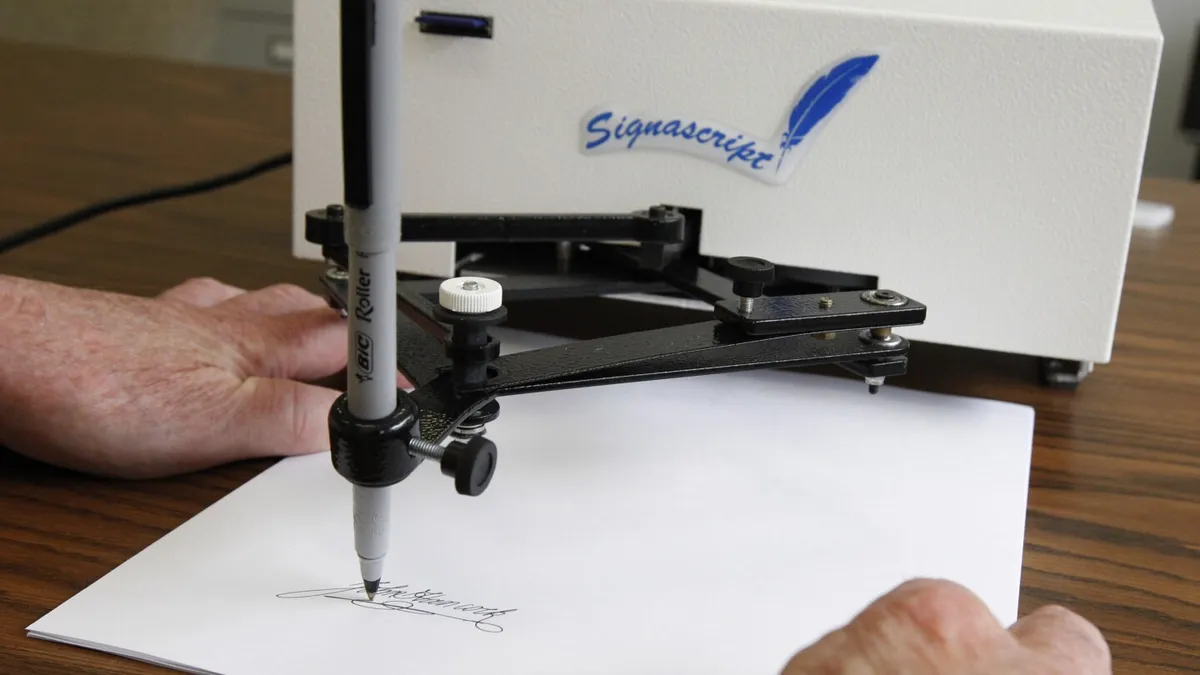
On Monday, former President Donald Trump made headlines by asserting that the recent pardons granted by President Joe Biden to lawmakers and staff involved in the investigation of the January 6, 2021, Capitol riot are ineffective. Trump claims that these pardons lack legitimacy because, according to him, Biden signed them using an autopen rather than his own hand. In a post on his social media platform, Trump stated, “In other words, Joe Biden did not sign them but, more importantly, he did not know anything about them!” However, Trump did not provide any evidence to substantiate his assertions, nor did the White House issue a response.
An autopen is a mechanical device designed to replicate a person's signature. It operates by holding a pen or similar writing instrument and using a pre-fed writing sample to reproduce the signature. This technology has been utilized by presidents, including Trump, for decades to manage their correspondence efficiently. It's important to note that autopens are distinct from traditional ink pads, rubber stamps, or electronic signatures commonly used in digital documents.
The recent controversy over Biden’s pardons stems from an analysis conducted by the Oversight Project at the conservative Heritage Foundation. Their review of numerous documents revealed that a significant number of Biden's signatures, including those on pardons, were created using an autopen. This finding has been widely circulated in conservative media, gaining traction among Trump supporters. Mike Howell, executive director of the Oversight Project, emphasized that the power to grant pardons is constitutionally vested solely in the president and cannot be delegated to another person or mechanical device.
Legally, there is no statute that explicitly governs a president's use of an autopen. A 2005 opinion from the Office of Legal Counsel at the Justice Department confirmed that autopen signatures are permissible for signing legislation. Notably, former President Barack Obama was the first to utilize an autopen in May 2011 while signing an extension of the Patriot Act when he was abroad. Historical guidance from as far back as 1929 indicates that neither the Constitution nor any statute mandates how executive clemency should be executed or documented.
Interestingly, Trump himself has acknowledged using an autopen, albeit for what he deemed "very unimportant papers." During a recent flight aboard Air Force One, he commented that autopens might be used to send letters of encouragement to young individuals. However, he criticized Biden for using the autopen for significant actions such as signing pardons, calling it “disgraceful.”
Trump’s fixation on the pardons related to the January 6 events is rooted in his ongoing frustration regarding his legal issues stemming from the Capitol riot. He faces allegations for inciting his supporters to disrupt the certification of Biden's victory in the 2020 election. At the end of his presidency, Biden issued what are termed “preemptive pardons” to lawmakers and committee staff to shield them from potential retaliation by Trump. The U.S. Court of Appeals for the Fourth Circuit has stated that the Constitution does not impose limitations requiring pardons to be in writing or signed by the president personally. Legal experts affirm that Biden’s accompanying statements clarify that these actions were indeed official acts.
Beyond pardons, presidents frequently use autopens for routine correspondence with constituents, recognizing significant life milestones and other formal communications. This practice allows for efficient management of the vast amount of correspondence that comes with the presidency.